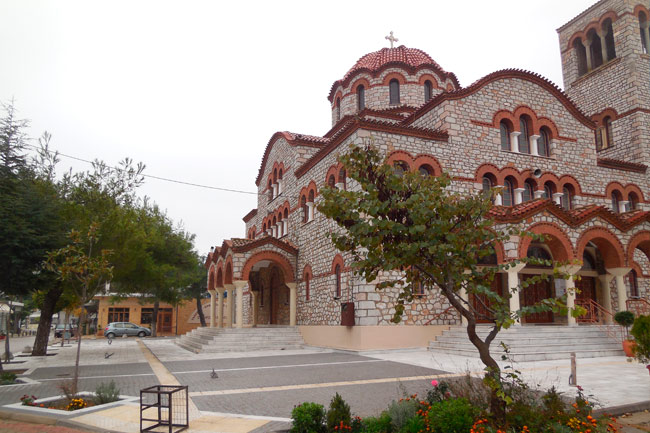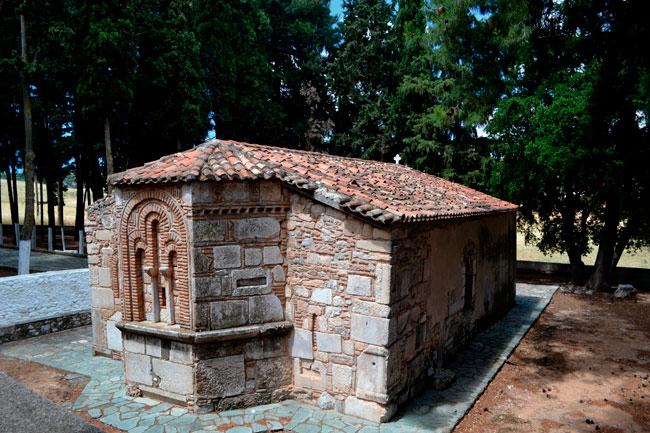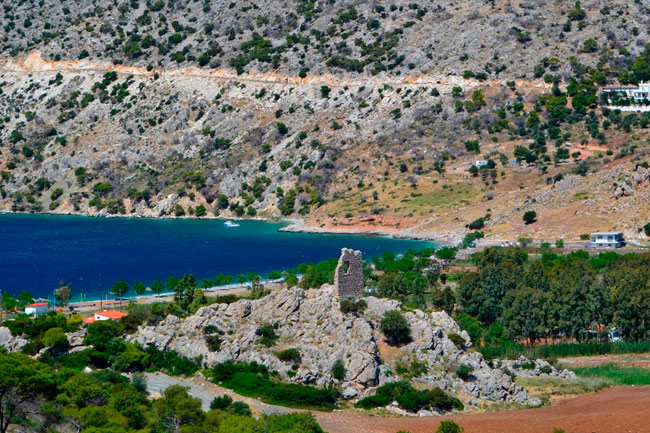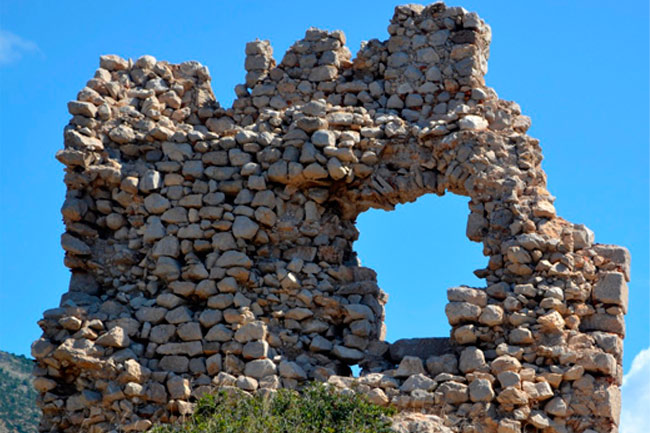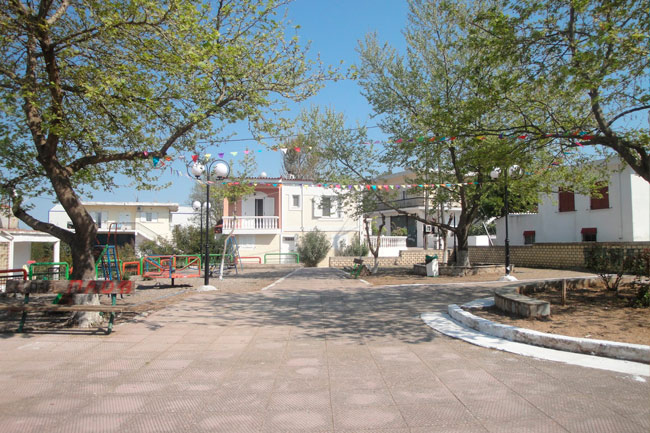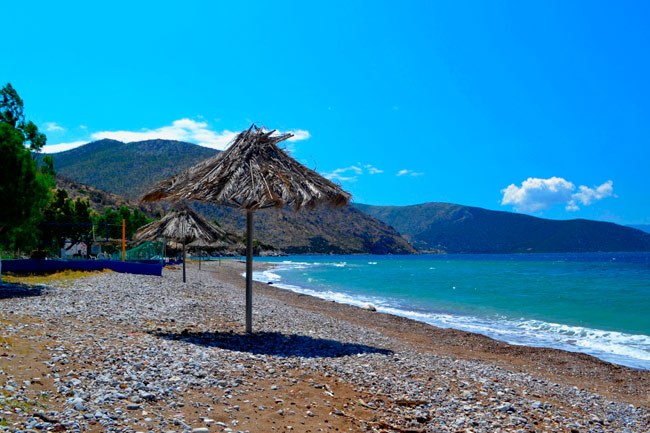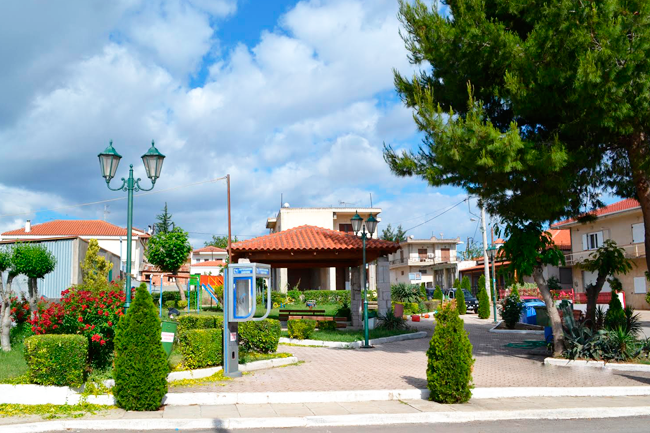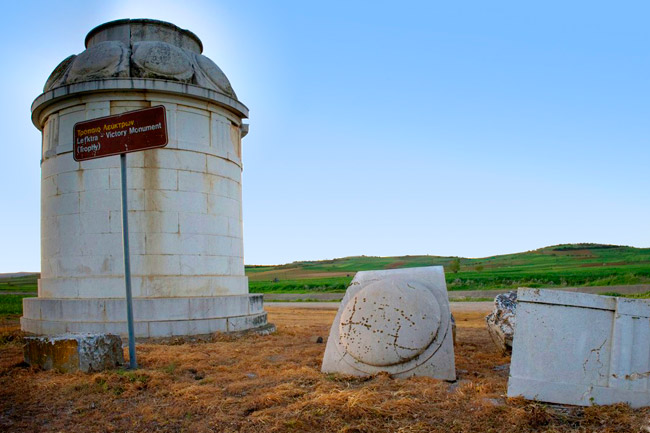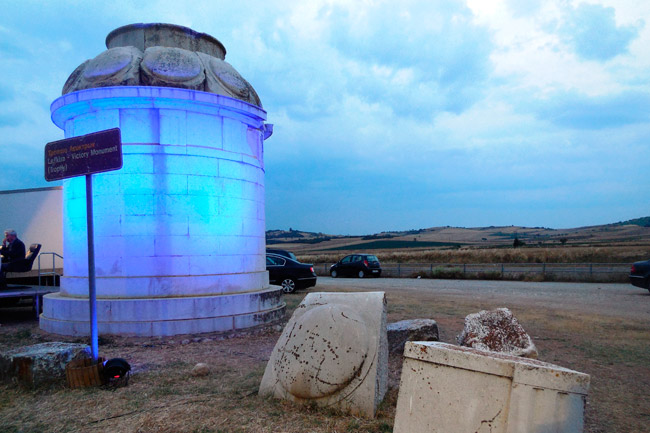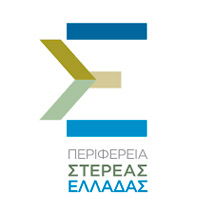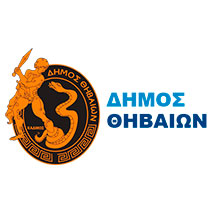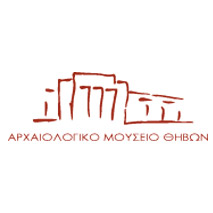On their way from Thiva to Lefktra, visitors run through the picturesque villages Loutoufi and Melissochori. First they come across the archaeological site of Eutresis on a 500m long plain.
This hill is called Akropodi after the name of a spring, which served to supply the settlement with water. It is an area of great archaeological importance. Around 6th century BC stood there a temple and an oracle of Apollo, who was hence surnamed Eutresites.
Remains of the temple have been excavated, while the offerings, made of bronze and clay, date back to the 6th and 5th centuries. On the southern slope of the hill there is evidence of the presence of another temple. A cemetery of the 5th and 4th centuries BC has also been found in the north-west of the hill and a tomb has been excavated.
Not far from the cemetery part of a farmhouse of the Hellenistic – Roman period had been discovered. In the farmhouse, wall inscriptions and two sculptures were found. To the northeast of the hill, a wall section was found, which the first excavators considered part of a fortification enclosure. At the same time parts of a fortification enclosure were found on the southern slope of the hill and a Medieval tower of square plan topped the hill.
The findings from the archaeological site of Eutresis can be seen in the Archaeological Museum of Thebes.
Lefktra as a small town in the ancient times became known after the victorious battle of the Thebans against the Spartans that took place there.
In the main square of Lefktra there is the church of the Transfiguration of the Saviour (Metamorfosi Sotiros), around which can be found shops and traditional taverns offering local dishes.
Located just outside Lefktra is the trophy of Epaminondas. The trophy was erected, as was customary, on the battlefield of Lefktra in 371 BC by the Thebans with Epaminondas as their general after their victory against the Lacedaemonians. The trophy was restored in 1957 by Professor Anastasios Orlandos.
Crossing through the village of Lefktra, visitors are brought through a verdant scenery to the beach named Livadostra, which is surrounded by the sea of the Corinthian Gulf. Besides its natural beauty, it is also an area of historical importance. On the steep slope of the mountain Korobili was built a defensive fortress, the Acropolis of Ancient Kreusis. Its ruins are preserved to date with elaborate boulders of the classical period.
The construction of the acropolis wall is the same as that of the wall of Plataeae. A few decades ago, the bronze Poseidon was recovered from the sea in Livadostra, and can be found in the National Archaeological Museum of Athens. A short distance from the fortress there is the church of Aghios Nikolaos, and nearby there was a well with drinking water. On a lower hill opposite the Acropolis of Kreusis stands a medieval tower of the 14th century.
